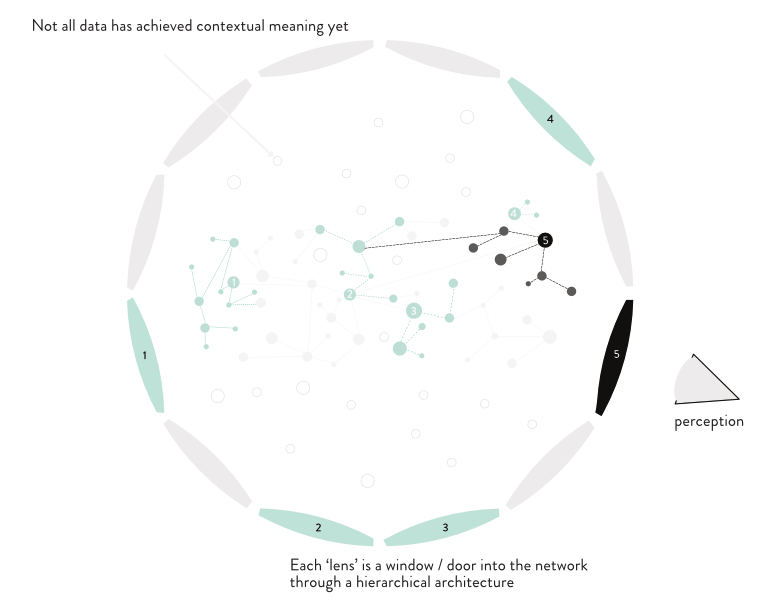Hierarchy as a lens
Lensing into the underlying network
A complex network sitting in the middle of an entirely-circling array of lenses — a lensed network. Four lenses are blue and numbered, with parts of the system likewise shifted to blue with a 'central' node having a number that corresponds to a lens. One lens is black, with a subset network also black. Outside the black lens, looking in, is an eye of perception.
Networks are closing in on the quality of truth, but hierarchies are still a truth — a perceptual truth. Multiple hierarchies into the same network are truths about that network, even if no data point is shared.
In my work, I look at hierarchies as windows or doorways or lenses. An opening or view is an overall good thing. It effectively chunks an information structure so its not as overwhelming. Chunking is one of the most useful thing we can do to aid memory development.
There are some big dangers with pulling hierarchical structures out of networks from a behavioral perspective:
- Not understanding when a hierarchy has ripened to a network
- Getting so focused on the hierarchy that the network is out of mind, or even forgotten (cognitive bias)
- Denying the existence of the network (cognitive bias)
- Denying the authenticity of any data not included in that hierarchy in the exact context and meaningfulness supported by it (cognitive bias)
My long-term synthesis and understanding, especially when considering the entire process of building complex software and content for users while making team lives easier.
perspective lens:
cognitive bias, context, garbage-in, meaning, memory, ripen
cognitive bias, context, garbage-in, meaning, memory, ripen
